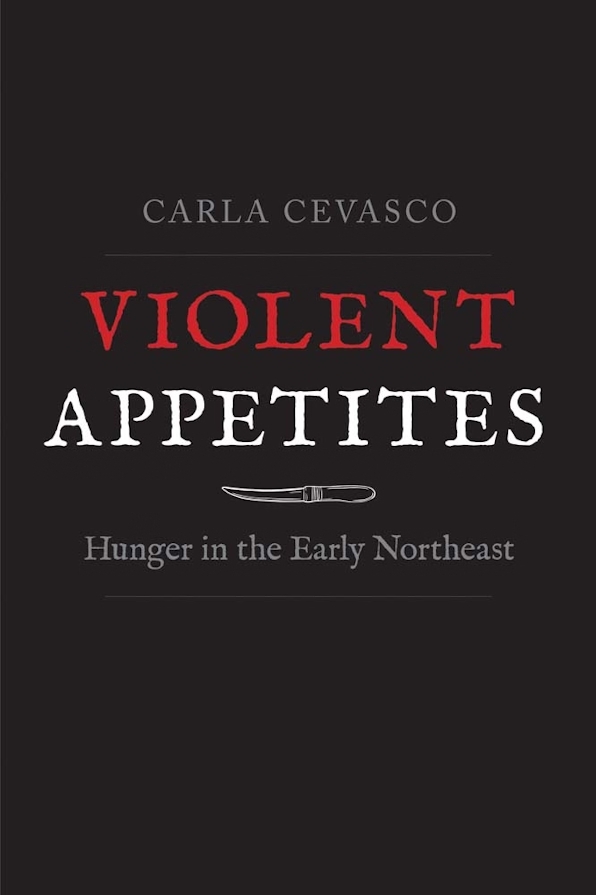It has been a privilege to read Violent Appetites, the latest installment of a debate about hangriness that unfolded at Nursing Clio in 2017. At that time, Carla Cevasco and I agreed about the importance of recovering the myriad meanings of hunger in the eighteenth century and disagreed over who experienced “hangriness” – the sensation of feeling simultaneously hungry and angry. I argued that eighteenth-century people did not experience this sense of being hungry and angry, and Cevasco thought it important to pursue “the connection between a hot temper and an empty stomach,” drawing on examples of colonists who raged when faced with food shortages. Neither of us cited evidence of people of Indigenous descent who experienced hangriness in the past, and in her new book, Cevasco explains why.
Violent Appetites argues that, in the seventeenth and eighteenth centuries, Native Americans in what is currently Canada, Connecticut, Massachusetts, Maine, New York, and Rhode Island possessed expansive hunger knowledges that allowed them to view hunger “as an inevitable part of a cycle of seasonal subsistence” (24). To deal with the hungry season, Wabanaki, Haudenosaunee, and other Indigenous peoples “mobilized reciprocal relationships to acquire and share food, and they developed nimble and adaptable ways of managing scarcity” that included foraging for wild foods, fasting, and feasting (24). They lived in relationship to and took responsibility for other plants, animals, and humans in the northeast. By the end of the eighteenth century, colonists’ enduring “myths of settler precarity,” their tendencies to deem Native American foodways disgusting, and their denial of “the ability of Native people to provide for themselves” justified the seizure of Indigenous lands (14, 105). In sum, Cevasco revisits our earlier debate to conclude that there seems to be little evidence of Native Americans who experienced hangriness because Indigenous hunger knowledges were much more expansive that non-Indigenous hunger knowledges.
At the same time, Cevasco’s chapters on hunger cultures and knowledges, fasting and feasting, disgust, cannibalism, and provisioning and resistance also accomplish much more than providing an answer to questions about hangriness. Among the contributions of Violent Appetites are its theorization of hunger cultures and its expansion of what scholars understand about Indigenous feasting practices and food sovereignty. Cevasco also points readers to two more pressing queries: why European sources were so adept at eliding Indigenous hunger knowledges, and whether non-Native historians can or should recover them. In dealing with this “archival conundrum,” Cevasco draws on “frameworks from scholarship by Native scholars and others” while consulting a wide array of sources, including captivity narratives, devotional texts, diaries, litanies, letters, medical and scientific texts, missionary journals, prayer books, provincial and military records, recipe books, and sermons (19).
